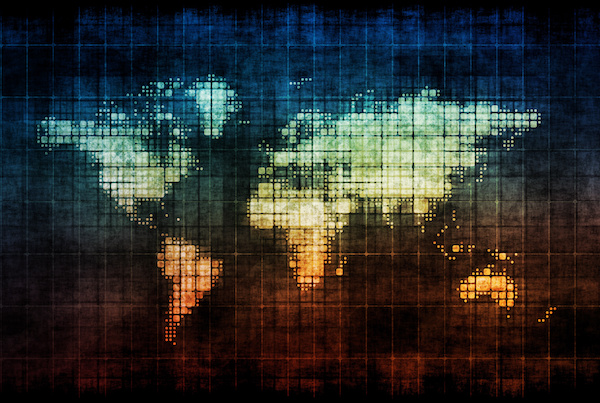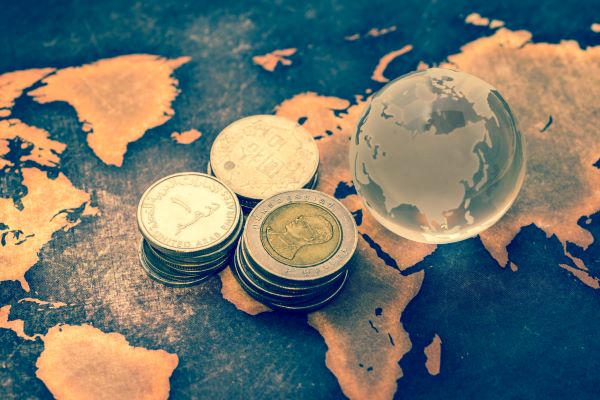Recommended
This note looks at the development finance provided to multilateral institutions by a group of 13 major economies that have become significant international actors over the past decade. This group—which includes the five BRICS countries—are outside of the mainly Western, high-income countries that absorb the focus of attention for most development activity: the 29 countries of the OECD's Development Assistance Committee (DAC).[1] We collate a unique dataset of core and earmarked contributions of development finance to major multilateral organisations between 2010-19, enabling comparison between emerging and established donor countries.
We find that over the decade to 2019, these 13 emerging countries have transformed their role in the multilateral system, starting from small beginnings to become significant actors. Their annual multilateral contributions of development finance (both core and earmarked) increased almost fivefold (up 377 percent), from $1.3 billion in 2010 to $6.3 billion in 2019. And their contributions have risen in relative terms too, more than doubling from 4 to 10 percent of the level provided by DAC countries.
Focusing in on unrestricted core contributions, the finance provided by these 13 emerging countries rose more than fivefold between 2010-19 (up 410 percent), from $1.0 billion to $5.2 billion. This is equivalent to 5 percent of the DAC level in 2010 and 12 percent in 2019.
And if we focus in still further, on core contributions to UN agencies, the rise of these emerging donors is even more notable. In 2010, they provided a twentieth (5 percent) of DAC core contributions to the UN system; but by 2019 this share had risen to over a sixth (17 percent) of the DAC level. In absolute terms, their core contributions of development finance to UN agencies more than quadrupled (up 330 percent) over the decade, from $0.3 billion to $1.2 billion.
Of the 13 emerging donors, China has been the largest provider of development finance to multilateral organisations as core funds over the decade, cumulatively contributing $10.8 billion from 2010-19—over a third (34 percent) of the total provided by the emerging donors. Collectively, the five BRICS countries provided almost three-quarters (73 percent) of this total, some $23.5 billion. Saudi Arabia is another significant contributor over the period ($2.5 billion). Following this group, Mexico, Turkey, and Argentina are also notable, each having cumulatively provided over $1.2 billion.
Midway through the decade, the creation and capitalisation of two new multilateral organisations—the Asian Infrastructure Investment Bank (AIIB) and the New Development Bank (NDB)—marked a step change in the level and composition of multilateral contributions from emerging donors, whilst also polarising the multilateral system between emerging and established donors.
In 2016, the newly created AIIB and NDB began to receive their first financial contributions. In this single year, the multilateral contributions from emerging donors more than tripled (up 226 percent) from 2015—almost entirely due to an additional $6.0 billion of core funds for AIIB and NDB (which did not reduce contributions to other multilaterals or through other channels). The gap between core multilateral development finance provided by emerging donors and the DAC also rapidly closed in this year: the former jumped from 4 percent of DAC levels in 2015 to 19 percent in 2016.
The creation of AIIB and NDB also led to a rapid shift in the composition of multilateral development finance provided by emerging donors. In 2015, emerging donors provided 41 percent of their total core contributions to UN agencies—a much higher share compared to the DAC (15 percent). But this share fell to a 17 percent average across the following four years when large contributions to AIIB and NDB were made, more in line with the DAC (16 percent). Following a similar pattern, in 2015 a greater share of total multilateral contributions was earmarked from emerging donors (49 percent) compared to the DAC (29 percent). But the earmarked share for emerging donors was dramatically driven down by its core contributions to AIIB and NDB, to an average of 13 percent between 2016-19 (much lower than the DAC’s 32 percent share).
The creation and capitalisation of AIIB and NDB was also associated with polarisation in the multilateral system, with different donor groups funding different sets of multilaterals. In the four years following their creation (2016-19), AIIB and NDB accounted for 65 percent ($15.6 billion) of the core contributions from emerging donors, compared to just 3 percent ($4.8 billion) of those from DAC countries, which instead tend to focus on funding the EU, IDA, Global Fund, and AfDF.
By 2050, some illustrative scenarios suggest these countries could collectively provide more nominal development finance as core contributions to multilateral organisations than was provided by DAC countries in 2019 ($41.6 billion). If the recent growth performance of these 13 emerging countries (E13) is extrapolated, the share of their combined GNI which they collectively provide as development finance via core contributions to multilateral organisations could rise from 0.019 percent in 2019 ($5.2 billion) to 0.032 percent in 2050 ($64.5 billion) if the group continues to follow its current trajectory—or even to 0.129 percent of GNI in 2050 ($262.9 billion) if the E13 were to instead follow the DAC pathway. Even if E13 core contributions remain fixed as a share of their GNI (i.e., at 0.019 percent), we could expect their contribution of development finance to increase to some $39.3 billion in 2050. The scale of this increase is made plain by the fact it could easily finance an additional IDA, whose 19th replenishment raised the equivalent of $27.3 billion for each year of replenishment period.
In short, the future economic growth of emerging actors could be a major source of additional multilateral development finance. How that finance is directed in the coming years—whether to humanitarian needs, infrastructure, climate, or global health—and how well it is spent will have major implications for global progress. We plan to explore these issues in further work.
This note is organised as follows. First, we introduce our novel dataset. Next, we provide context on past and projected economic growth, and why this matters for emerging actors in the multilateral system. Third, we the consider the development finance provided by emerging actors and compare this to established DAC donors and examine a number of trends within the data. Finally, we look at some illustrative scenarios for future volumes of multilateral development finance provided by emerging actors. We also attach the data by provider and multilateral institution in the annex.
Read the full note here.
Rights & Permissions
You may use and disseminate CGD’s publications under these conditions.







